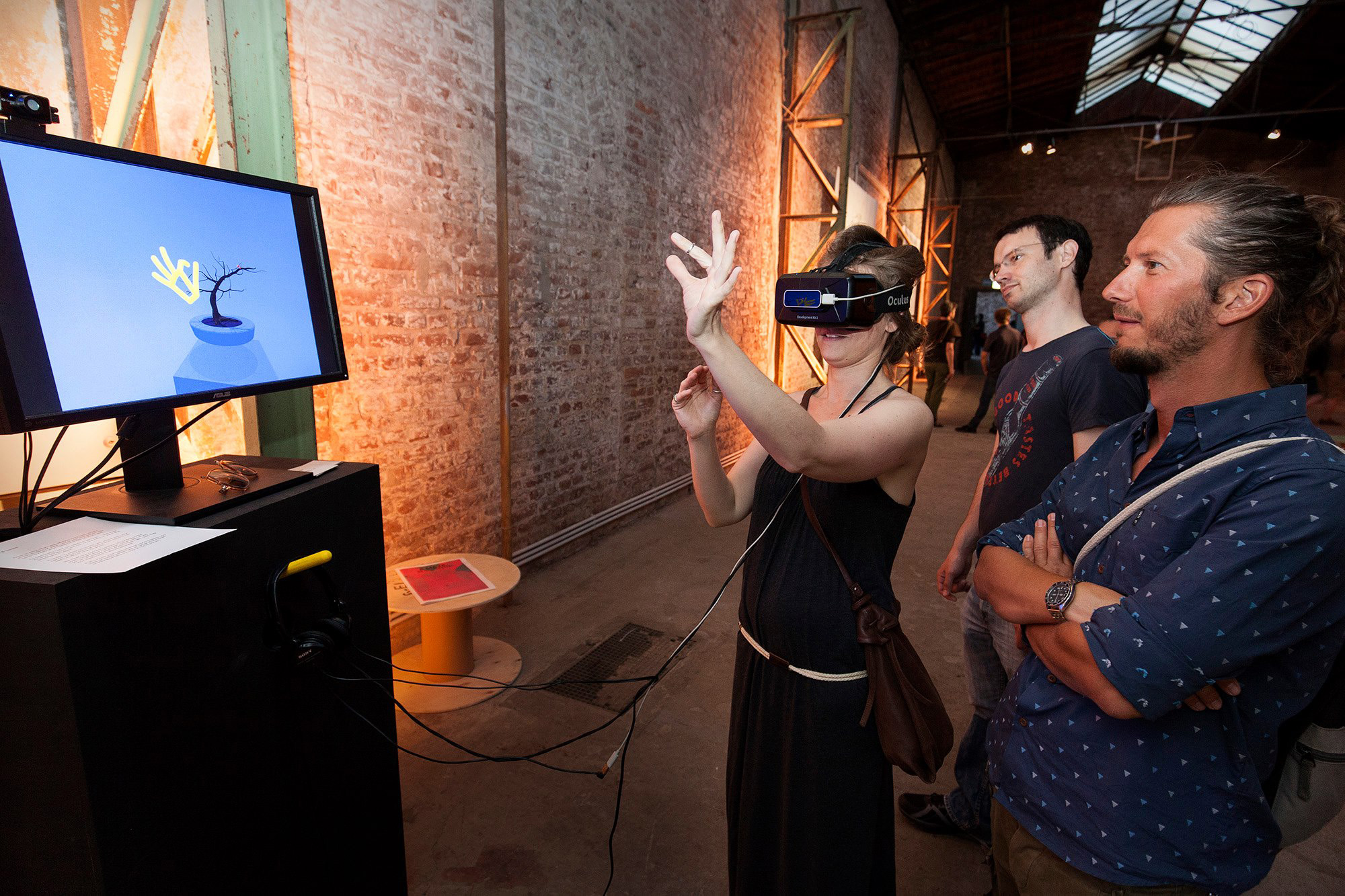IMVR
A Study in Interactive Mechanics for Virtual Reality is the practical part of my B.A. thesis at Köln International School of Design. Together with Eugene Krivoruchko, I created a series of short VR experiments exploring the feasibility of driving interactive mechanics capability by the user's bare hands. This work was developed on ancient VR equipment: an Oculus Rift DK2 combined with a Leap Motion hand tracking device. Back then, in 2016, Leap Motion was the only possible option for tracking hands in VR.
We did the work on the assumption that our hands are the most natural input device within the virtual world. Our focus on interaction comes from believing that hands can control the dynamic world more effectively than any handheld device. Around five years ago, it was a vision of the future that was coming true, thanks to the new hardware that was coming out at the time.
Six experiments
In this study, we designed and developed six experimental mechanisms, allowing the user to control or modify the dynamic environment. Each experiment shows one specific principle of interaction. What is common for all experiences throughout the series is that a predictable-looking environment starts to exhibit a less-expected behavior – even behaviors that would be impossible outside virtual reality. Instead of creating abstract-looking spaces, we aimed to explore abstract behaviors that can be achieved only in VR and in no other screen-based media.
We did the work on the assumption that our hands are the most natural input device within the virtual world. Our focus on interaction comes from believing that hands can control the dynamic world more effectively than any handheld device. Around five years ago, it was a vision of the future that was coming true, thanks to the new hardware that was coming out at the time.
Six experiments
In this study, we designed and developed six experimental mechanisms, allowing the user to control or modify the dynamic environment. Each experiment shows one specific principle of interaction. What is common for all experiences throughout the series is that a predictable-looking environment starts to exhibit a less-expected behavior – even behaviors that would be impossible outside virtual reality. Instead of creating abstract-looking spaces, we aimed to explore abstract behaviors that can be achieved only in VR and in no other screen-based media.

The Other
You enter the experience facing a title screen with dynamic letters floating in a vacuum. The text suggests trying out the first gesture-based function – clapping your hands. With a clap, you can move on to the next scene.
The first scene shows a digital mirror, allowing you to observe your avatar and movement. you can touch the hands and the head of The Other. This interaction provides an uncanny feeling of someone else's presence in the scene.
The first scene shows a digital mirror, allowing you to observe your avatar and movement. you can touch the hands and the head of The Other. This interaction provides an uncanny feeling of someone else's presence in the scene.
Clouds
In this experience, your hands are a hundred times bigger than their regular scale and the rest of the body. It is a somehow god-like experience where you can modify a distant environment with your own hands.
Bonsai
The unique thing about VR is the perception of three-dimensional space within the realm of digital media. No other screen-based medium can achieve the spatial precision and control of 3D objects or environments. Using Bonsai, we illustrated the ability of the user to move hands into a specific position in a three-dimensional space. Something self-evident in real life, but fundamentally new in screen-based media.
Crank
We can usually break down a VR world into two fundamental components: the environment and object spaces. The environment is essential for the feeling of being there in the digital space. The objects are usually interactive: you can grab or throw them or trigger any programmed behavior of a particular object.
In this experiment, we showed a way by which an entire environment can be transferred to an object. While operating the crank, you can modify the scale of the environment: either growing or shrinking it. At some point, the environment reaches the size of a vinyl record, which you can potentially grab in your hands.
In this experiment, we showed a way by which an entire environment can be transferred to an object. While operating the crank, you can modify the scale of the environment: either growing or shrinking it. At some point, the environment reaches the size of a vinyl record, which you can potentially grab in your hands.
Soup
Virtual objects can always contain a subset of elements with their own properties and rules. In Soup, we illustrate how an object (the bowl) can be taken apart, displaying the own contextual subset of objects (the soup).
Cave
How about some superpowers in VR? In the Cave, you can remotely control the floating cubes with your hands. The mechanics are easy to learn and, after some short practice, the behavior of the cubes responds very naturally and predictably. A truly magnificent interaction that reminds me a few of Magneto´s powers in the X-Men.